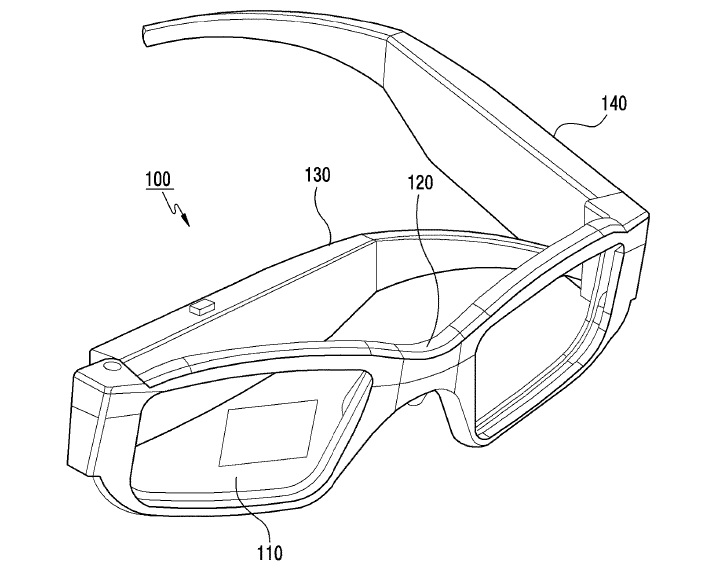
July 18, 2019 – Reports have surfaced this week that Samsung is looking into the development of augmented reality smart glasses, according to a patent application filed with the US Patent and Trademark Office (USPTO). The filing was published on July 12, 2019, however the application was filed to the USPTO by Samsung at the start of this year on January 2, 2019. This most recent filing relates to a patent that the company filed a year earlier on January 10, 2018, with the Korean Intellectual Property Office.
The application points towards Samsung aiming to create a “wearable electronic device that can be folded.” However, the filing also highlights concerns that the company has relating to the design of a folding device, specifically due to the fact that “there is a risk that the devices may be damaged when they are carried by the user.” This is as a result of the temple portion of the glasses potentially being of a fixed construction, meaning they cannot be folded or stored easily.
With Samsung’s Galaxy Fold smartphone recently coming under fire after several devices ended up breaking in the hands of reviewers, partly as a result of folding, it seems the company had concerns about issues relating to the folding of other devices, and not just its smartphone model, at least as early as January this year. As a result, it would be fair to expect the company to take its time with this to ensure that any folding-related issues with future devices are properly tested and ironed out before release.
That being said, the patent application does highlight several solutions that Samsung has come up with in order to counter any potential breakage issues when folding the AR glasses. These include: simply designing a device where the temple portion itself is foldable instead of fixed; making the temple portion replaceable and therefore easy to repair; other rotation and hinge related solutions that allow for either the temple or housing portions of the glasses to be foldable.
In terms of features and functionality, the design of the AR glasses is similar to that of a regular pair of eyeglasses, but will include a projector that passes images through a prism, and then a waveguide, in order to output images to the wearer’s eyes. Samsung states that: “Conventionally, AR wearable devices that are in the shape of eyeglasses typically have fixed temples such that the eyeglasses cannot be folded. This is due to the rigidity of the waveguide.”
Other features include the device’s ability to recognize whether it is folded or unfolded through the use of a magnetic sensor, in order to save on power consumption by turning the in-built projector on or off. A flow-chart included in the application also highlights components that include: a Battery, sound output device, audio module, haptic module, camera module, wired and wireless communication modules, internal and external memory, main and auxiliary processor modules, and finally, a SIM card module.
As this is only a patent filing, it doesn’t mean that anything will ever come of it. These AR glasses from Samsung may never exist exactly as specified in the application, if at all. If the company does at some point release a form of AR glasses, they may not look anything like that which has been disclosed in the filing. However, the company has addressed this by stating in the application that the present disclosure, as described with reference to the accompanying drawings “is not intended to limit the embodiments of the present disclosure to the particular form disclosed, but, on the contrary, it is intended to cover all modifications, equivalents, and alternatives falling within the spirit and scope of the embodiments of the present disclosure.”
Simply put, it means Samsung doesn’t want to limit its design, and wants to allow room for all potential ideas for its AR glasses to be covered in the future.
Visit the Auganix HUD for more information on Samsung.
Image credit: Samsung/USPTO
About the author
Sam Sprigg
Sam is the Founder and Managing Editor of Auganix. With a background in research and report writing, he has been covering XR industry news for the past seven years.




